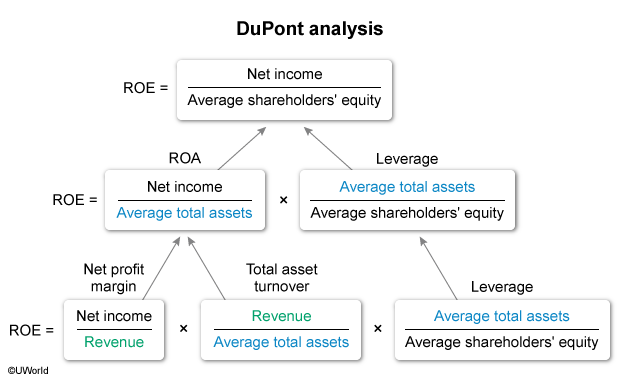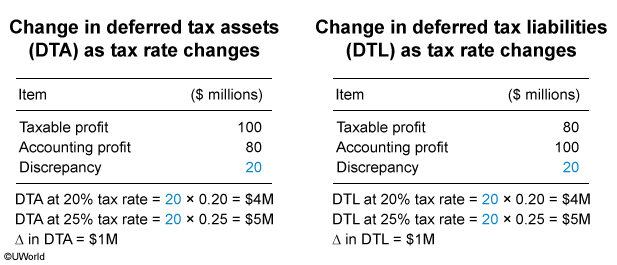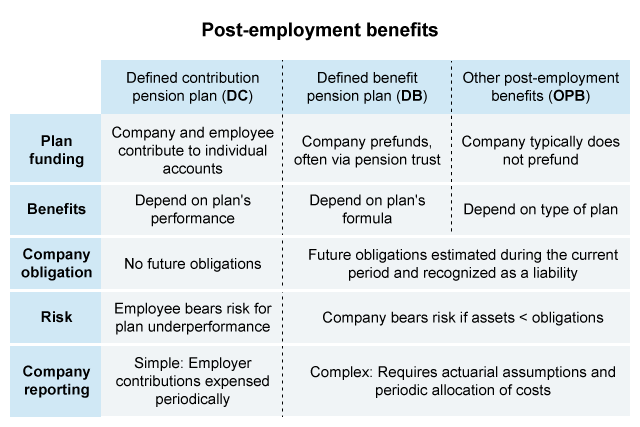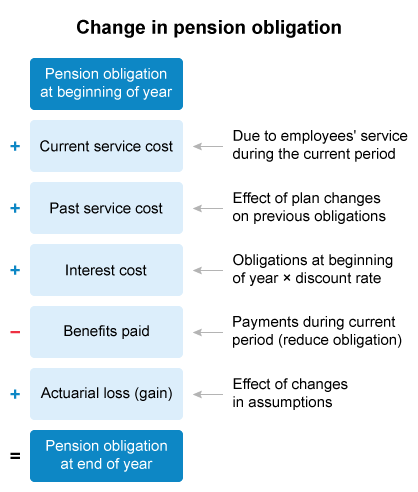CFA® Financial Statement and Analysis
Summary, Syllabus, Topics, and Sample Questions (L1, L2, L3)
Financial analysis involves examining a company's performance about its industry and the broader economic context to inform investment decisions. This process includes evaluating whether to invest in a company's debt or equity offerings and at what valuation. Financial analysts focus on a company's capacity to generate returns that match its capital costs, expand its operations profitably, and maintain sufficient cash flow to meet obligations and seize opportunities.
Investors in debt securities are primarily concerned with the company's ability to service its debt through interest payments and principal repayment. On the other hand, equity investors, who essentially own a portion of the company, are interested in the firm's ability to distribute dividends and increase its overall value and share price.
The cornerstone of fundamental financial analysis is the information gleaned from a company's financial reports. These include audited financial statements, legally required disclosures, and supplementary management commentary, although this latter may not be audited.
What to Expect in CFA Level 1 Financial Statement Analysis?
The CFA Level 1 Financial Statement Analysis (FSA), formerly known as Financial Reporting and Analysis (FRA), is the second most weighty topic on the CFA exam after Ethics. FSA is fundamental not only to passing Level 1 but also to succeeding in the CFA Program overall. 20% of Level 1 readings are dedicated to the topic and cover a breadth of financial accounting knowledge. Candidates will study the various components of financial statements, how to assess their quality, and how to adjust data to improve their analysis and thus value companies and assets more accurately.
Exam Weighting
The CFA Financial Statement Analysis has a weight of 11-14%, so approximately 20-25 of the 180 CFA Level 1 exam questions focus on this topic.
| Topic Weight | No. of Learning Modules | No. of Formulas | No. of Questions |
|---|---|---|---|
| 11-14% | 12 | Nearly 100 | ca. 25 |
Level 1 Financial Statement Analysis Syllabus, Readings, and Changes
The CFA Level 1 exam for 2024 comprises 12 Learning Modules, mirroring the structure of the 2023 exam. Notably, this year introduces “Introduction to Financial Statement Modeling” and divides the Cash Flow section into two smaller readings. Financial Reporting Standards have been integrated into the introductory reading, marking a change from the previous format.
Introduction to Financial Statement Analysis
This first reading of Financial Statement Analysis introduces financial reporting roles and how to use various financial statements to evaluate a company’s performance and financial position. The reading also covers the importance of financial statement notes, the objective of audits, and information sources used by analysts.
Understanding Income Statements
Covers the components of the income statement and general principles and accounting standards for revenue and expense recognition. The reading also includes how earnings per share (EPS) is calculated and interpreted and the fundamentals of non-recurring items in financial analysis.
Understanding Balance Sheets
Provides detailed descriptions of balance sheet items (assets, liability, equity) and the uses and limitations of the balance sheet in financial analysis. The reading also contrasts current and noncurrent assets/liabilities and demonstrates how to calculate and interpret liquidity and solvency ratios.
Understanding Cash Flow Statements I and II
Cash flows from operating, investing, and financing activities are compared, contrasted, and classified. The readings detail how the cash flow statement is linked to the income and balance sheets and introduce several analytical ratios.
Inventories
Costs included in inventories are contrasted with costs counted as expenses. The reading explains important inventory valuation methods like FIFO and LIFO, the LIFO reserve and liquidation, and their relation to financial statements and ratios.


Long-Lived Assets
Details the difference between tangible and intangible assets, depreciation and amortization methods, and impairment, revaluation, and derecognition of long-term assets. The reading also covers finance and operating leases.
Non-Current (Long-Term) Liabilities
Covers financial statement presentation, disclosures, and derecognition of debt, as well as treating debt covenants in protecting creditors. The reading also includes descriptions of the effective interest method and how to calculate interest expense, amortization of bond discounts/premiums, and interest payments.
Income Taxes
Defines and distinguishes accounting profit and taxable income and the resulting deferred tax assets or liabilities, or valuation allowance. This is an essential reading as the material is typically less familiar to candidates.
Financial Reporting Quality
Provides tips on distinguishing between conservative and aggressive accounting and identifying the conditions that can lead to low-quality or fraudulent financial reports. The reading also details accounting methods for managing earnings, cash flow, and balance sheet items.
Financial Analysis Techniques
Covers tools and techniques used to analyze companies. The reading is highly theoretical and includes an overview of methods used to identify, calculate, and interpret activity, liquidity, solvency, profitability, and valuation ratios.
Introduction to Financial Statement Modeling
Candidates will learn to develop a sales-based pro forma company model and address behavioral factors’ impact on analyst forecasts. The course explores how a company’s competitive position, analyzed through Porter’s five forces, influences prices and costs. Additionally, candidates will gain expertise in forecasting sales and costs amid price inflation or deflation, with insights into choosing forecast horizons and extending projections beyond the short term.
CFA Financial Statement Analysis Level 1 Sample Questions and Answers
The sample questions are typical of the probing multiple-choice questions on the L1 exam. During the exam, you have about 90 seconds to read and answer each question, carefully designed to test knowledge from the CFA Curriculum. UWorld’s CFA exam prep is built to expose you to exam-like questions and illustrate and explain the concepts tested thoroughly.
Using DuPont analysis, an analyst compiles the following data for a company:
| 20X7 | 20X6 | 20X5 | |
|---|---|---|---|
| Return on equity | 16.7% | 16.5% | 15.9% |
| Return on assets | 6.0% | 6.2% | 6.4% |
Based only on this information, and assuming revenue and net income were unchanged during this period, the most appropriate conclusion is that the company’s:
- leverage increased
- total asset turnover increased
- average shareholders’ equity increased
Return on equity (ROE) measures the profitability generated per unit of equity invested. Simply defined, ROE is the ratio of net income to average shareholders’ equity. DuPont analysis subdivides ROE into five underlying components: tax burden, interest burden, profitability, efficiency, and leverage. ROE can be expressed as the product of the company’s return on assets (ROA) and leverage since profitability can be enhanced by using leverage.
| ROA | Leverage | |||
| ROE = |
Net income
/
Average total assets
|
x |
Average total assets
/
Average shareholders’ equity
|
|
ROE can be further subdivided using the components of ROA, the product of net profit margin and total asset turnover. This form of ROE calculation is often referred to as the three-factor model.
| Net profit margin | Total asset turnover | Leverage | ||||
| ROE = |
Net income
/
Revenue
|
x |
Revenue
/
Average total assets
|
x |
Average total assets
/
Average shareholders’ equity
|
|
In this instance, ROE increased during the period 20X5 to 20X7. Since ROE is the product of ROA and leverage, and ROA decreased, leverage must have increased to result in an increase of ROE.
(Choice B) Since ROA decreased while net profit margins remained stable (given), total asset turnover must have decreased. Specifically, average total assets increased.
(Choice C) A rise in ROE with stable net income could only occur if average shareholders’ equity decreased.
Things to remember:
Return on equity (ROE) measures the profitability generated per unit of equity invested. Simply defined, ROE is the ratio of net income to average shareholders’ equity. DuPont analysis subdivides ROE into five underlying components: tax burden, interest burden, profitability, efficiency, and leverage. ROE can be expressed as the product of the company’s return on assets and leverage.
A manufacturing company that uses LIFO under US GAAP shows the following inventory-related information at the end of 20X8:
| Selected Data ($ millions) | |
|---|---|
| Cost of ending inventory | 100 |
| Selling price | 110 |
| Completing cost | 15 |
| Normal profit margin | 20 |
| Replacement cost | 70 |
Based on this data, the inventory amount reported on the balance sheet (in $ millions) is closest to :
- 70
- 75
- 95
Inventory may lose value due to spoilage, obsolescence, or declines in selling prices. Companies often update their inventory values on the balance sheet to account for such events. US GAAP require companies using LIFO to report inventory at the lower of historic cost or market value (MV).
MV is defined as the current replacement cost (RC) subject to an upper and lower limit.
- The upper limit is the net realizable value (NRV), which equals the selling price minus costs to complete and sell the inventory. In this scenario, the upper limit (NRV) equals the selling price (110) minus the completion cost (15), or 95.
- The lower limit is the NRV minus a normal profit margin. In this scenario, the lower limit equals NRV (95) minus a normal profit margin (20), or 75.
The MV is 75 since the RC of 70 is subject to a lower limit of 75 (ie, cannot fall below 75). Since the company must record inventory at the lower of cost or market, it must update its inventory amount on the balance sheet to 75.
Note: MV is always the middle number of the RC, upper limit, and lower limit, when ranked in order:
- If RC > Upper > Lower, MV is the upper limit.
- If Upper > RC > Lower, MV is the RC.
- If Upper > Lower > RC, MV is the lower limit.
(Choice A) 70 results from not imposing a lower limit of 75 on the RC.
(Choice C) 95 is the NRV, which is the upper limit.
Things to remember:
US GAAP require companies using LIFO to report inventory at the lower of historic cost or market value (MV). MV is defined as the replacement cost subject to an upper and lower limit. The upper limit is the net realizable value (NRV), which equals the selling price minus completion and selling costs. The lower limit is NRV minus a normal profit margin.
An increase in the statutory tax rate will most likely:
- increase both deferred tax assets and deferred tax liabilities
- increase deferred tax assets and decrease deferred tax liabilities
- decrease deferred tax assets and increase deferred tax liabilities
Deferred tax items (ie, deferred tax assets and liabilities) arise from the difference between income tax expense (for accounting purposes) and taxes payable (for tax reporting) for a period. Differences can occur as tax expense is calculated according to accounting standards and taxes payable are calculated according to the tax code.
- Deferred tax assets (DTA) arise when taxable profit is greater than accounting profit and taxes payable are greater than tax expense.
- Deferred tax liabilities (DTL) arise when taxable profit is less than accounting profits and taxes payable are less than tax expense.
As illustrated above, at any given tax rate, deferred tax items can be calculated as the absolute difference between taxable profit and accounting profit, multiplied by the tax rate. Therefore, the sizes of DTA and DTL are directly related to the tax rate. As the tax rate increases, the value of deferred tax items also increase (Choices B and C).
Things to remember:
Deferred tax items can be calculated by multiplying the absolute difference between taxable profit and accounting profit by the applicable tax rate. Therefore, the sizes of deferred tax assets and deferred tax liabilities are directly related to the tax rate. As the tax rate increases, the value of deferred tax items also increases.
What to Expect in CFA Level 2 Financial Statement Analysis?
CFA Level 2’s Financial Statement Analysis (FSA) is a pivotal and weighty subject, integral not only to Level 2 success but overall CFA proficiency. Candidates delve into a more nuanced exploration of concepts and principles introduced in Level 1 FSA, underscoring its significance in building a robust foundation for CFA achievement.
Exam Weighting
The CFA Level 2 Financial Statement Analysis has a weight of 10%-15% on the L2 exam, meaning that approximately 8-12 of the 88 CFA Level 2 exam questions or 2-3 item sets focus on this topic.
| Topic Weight | No. of Learning Modules | No. of Formulas | No. of Questions |
|---|---|---|---|
| 10-15% | 7 | Nearly 40 | ca. 8-12 or 2-3 item sets |
Level 2 Financial Reporting Analysis Syllabus, Readings, and Changes
The CFA Level 2 exam includes 7 Learning Modules for 2024, of which Financial Statement Modeling reading which was previously Industry and Company Analysis, has a minor revision in which a reading moved from Equity Valuation topic to FSA.
Intercorporate Investments
Describes the classification, measurement, and disclosure under International Reporting Standard (IFRS) for various investments and compares and contrasts to US GAAP. The reading also covers the effect of various accounting methods for intercorporate investments on financial statements and ratios.
Employee Compensation: Post-Employment and Share-Based
Look at strategies to explain and calculate measures of a defined benefit pension obligation, the effect of a defined benefit plan’s assumptions on the defined benefit obligation and periodic pension cost, and the effect of adjusting for pension items and other post-employment benefits reported in financial statement notes on financial statements and ratios.
Multinational Operations
Covers foreign currency transaction exposure, how currency fluctuations affect financial results, and how a company’s effective tax rate is affected by multinational operations. The reading also compares and contrasts presentations in reporting various currencies and the current rate and temporal methods.
Analysis of Financial Institutions
Describes the differences between financial institutions and companies and key aspects of financial institutions’ financial regulations. The reading also explains various approaches to analyzing banks, including the capital adequacy, asset quality, management, earnings, and liquidity and sensitivity (CAMELS) approach.


Evaluating Quality of Financial Reports
Demonstrates conceptual frameworks for assessing financial report quality (balance sheets, cash flow, etc.), including identifying potential issues that negatively affect quality. The reading also explains mean reversion in earnings and how the accrual component of earnings affects the speed of mean reversion.Integration of Financial Statement Analysis Techniques
Demonstrates frameworks for analyzing particular problems within financial statements (e.g., critiquing a credit card rating, valuing equity based on comparables, etc.). The reading also covers evaluating financial and reporting biases in the quality of a company’s financial data and recommends appropriate adjustments to improve quality and comparability with similar companies.Financial Statement Modeling
It focuses on the complexities of modeling pro forma financial statements and includes additional material on behavioral biases in forecasting.CFA Financial Statement Analysis Level 2 Sample Questions and Answers
The sample questions here are typical of the L2 exam’s complexity and depth: formatted as item sets, with a vignette to deliver a scenario that tests the CFA L2 Curriculum. (On the actual exam, each vignette applies to four questions; we’ve thrown in a couple extra to get a bit more learning in). And be sure to review the illustrated explanations we’ve provided for each question: UWorld’s question bank is designed to expose you to exam-like questions and explain the concepts tested thoroughly.
Passage
Lang & Bauer Group (LBG) is a German company that reports using IFRS. LBG has two retirement benefit plans: a defined contribution plan, open to all employees, and a defined benefit plan, closed to new participants.
LBG’s chief executive officer, Emma Schuster, asks the chief financial officer, Jan Berger, to outline the current situation of the company’s retirement benefit plans. Berger explains that the plans have distinct features, and although the accounting treatment of the defined contribution plan is relatively simple, the defined benefit plan requires a more detailed analysis. Berger presents the following information from the defined benefit plan:
| Exhibit 1 Lang & Bauer Retirement Plan Information | |
|---|---|
| (EUR millions) | 20X8 |
| Discount rate assumption | 5.00% |
| Current service costs | 1,250 |
| Past service costs | 850 |
| Actuarial loss (gain) | 200 |
| Employer contribution | 2,300 |
| Benefits paid | 1,800 |
| Actual return on plan assets | 900 |
| Pension obligation at beginning of year | 13,000 |
| Fair value of plan assets at beginning of year | 11,400 |
Berger warns Schuster that this information relies on some key assumptions, and that changes in these assumptions would have material effects on the estimates of benefit obligations and periodic pension costs. Berger lists the discount rate, the annual compensation growth, and life expectancy as some of these key assumptions.
Schuster asks Berger to prepare a comparison with defined benefit plans of LBG’s peers in Europe and in the United States. Berger explains that, since US companies comply with US GAAP, there are several differences in the way that pension costs are recognized in the profit and loss (P&L) and other comprehensive income (OCI) statements. Schuster asks Berger to provide examples of how the accounting treatment under US GAAP differs from the treatment under IFRS. Berger states that under US GAAP:
Example 1: Actuarial losses (gains) recognized in OCI are not subsequently amortized to P&L.
Example 2: The effects of plan amendments on obligations for prior services are recognized in P&L.
Example 3: Differences between actual and expected return on assets result in an actuarial loss or gain.
Which of the following best describes a feature of LBG’s defined contribution plan?
- Contributions and payments are usually made through a pension trust.
- The employer is not responsible for the investment risk of the plan assets.
- An increase in compensation levels will increase the future plan obligation.
LBG’s chief executive officer, Emma Schuster, asks the chief financial officer, Jan Berger, to outline the current situation of the company’s retirement benefit plans. Berger explains that the plans have distinct features, and although the accounting treatment of the defined contribution plan is relatively simple, the defined benefit plan requires a more detailed analysis.
Post-employment benefit plans provide future benefits to employees, which may create a future obligation for the company, depending on the type of plan. These plans are characterized as defined contribution (DC) plans or defined benefit (DB) plans. Under IFRS and US GAAP, DB plans include other post-employment benefits (OPB), such as life and health insurance after retirement.
In DCplans, employer and employee may contribute to an individual investment account. The plan does not define future benefits, which will depend on the performance of the invested assets. Each employee selects the investments, based on the options provided by the plan, and bears the risk of investment performance. The company has no obligation besides contributing to the plan if it has committed to do so (usually during the period the employee works for the company), as specified by the plan.
(Choice A) The company will typically fund the DB plan via a pension trust, whose assets are used to pay future benefits to the employee, usually based on factors like years of service and compensation.
(Choice C) Greater levels of compensation increase benefits that a company promises in a DB plan, but in a DC plan, future obligations do not change according to changes in compensation.
Things to remember:
Post-employment benefit plans include pension plans, life insurance, and health care insurance after retirement. In defined contribution pension plans, the benefit results from the amount contributed and the employee’s investment return; the employer typically contributes to the employee’s plan but has no future obligations. In defined benefit pension plans and other post-employment benefits, the employer is obligated to provide a future benefit.
Based on Exhibit 1, the defined benefit pension obligation (in EUR millions) at the end of the year is closest to:
- 13,950
- 14,150
- 15,950
| Exhibit 1 Lang & Bauer Retirement Plan Information | |
|---|---|
| (EUR millions) | 20X8 |
| Discount rate assumption | 5.00% |
| Current service costs | 1,250 |
| Past service costs | 850 |
| Actuarial loss (gain) | 200 |
| Employer contribution | 2,300 |
| Benefits paid | 1,800 |
| Actual return on plan assets | 900 |
| Pension obligation at beginning of year | 13,000 |
| Fair value of plan assets at beginning of year | 11,400 |
An employer that sponsors a defined benefit plan promises to pay a future amount to retired employees, often over a defined period, usually based on factors like years of service and compensation. Periodically, the employer must estimate its pension obligation, which is the present value of these future benefits, called the present value of defined benefit obligation (PVDBO) under IFRS and projected benefit obligation (PBO) under US GAAP. The estimate of the pension obligation relies on actuarial assumptions like retirement age and life expectancy, as well as on past and current service costs, interest costs, and benefits paid.
In this instance, the pension obligation at the end of the year is calculated as:
| Pension obligation at beginning of year | 13,000 |
| + Current service cost | 1,250 |
| + Past service cost | 850 |
| + Internet cost | 650 |
| ( – ) Benefits paid | (1,800) |
| + Actual loss (gain) | 200 |
| = Pension obligation at end of year | 14,150 |
(Choice A) 13,950 results from not adding actuarial losses to the calculation.
(Choice C) 15,950 results from not subtracting benefits paid from the calculation.
Things to remember:
The pension obligation is the present value of the future benefits of a defined benefit pension plan. This obligation is calculated periodically: it increases due to service costs, interest costs, and actuarial losses, and it decreases when benefits are paid or if actuarial gains occur.
Based on Exhibit 1, the fair value of plan assets (in EUR millions) at the end of the year is closest to:
- 10,500
- 12,800
- 14,600
| Exhibit 1 Lang & Bauer Retirement Plan Information | |
|---|---|
| (EUR millions) | 20X8 |
| Discount rate assumption | 5.00% |
| Current service costs | 1,250 |
| Past service costs | 850 |
| Actuarial loss (gain) | 200 |
| Employer contribution | 2,300 |
| Benefits paid | 1,800 |
| Actual return on plan assets | 900 |
| Pension obligation at beginning of year | 13,000 |
| Fair value of plan assets at beginning of year | 11,400 |
An employer that sponsors a defined benefit plan must periodically estimate the amount of benefit to be provided to plan participants in the future (ie, pension obligation. Typically, the employer will make contributions to the plan through a pension trust, a separate entity that acquires and manages assets and pays benefits to retirees using the returns and sale proceeds from these assets.
In this instance, the fair value (FV) of plan assets at end of year is calculated as:
| FV of plan assets at beginning of year | 11,400 |
| + Actual return on plan assets | 900 |
| + Employer contributions | 2,300 |
| ( – ) Benefits paid | (1,800) |
| = FV of plan assets at end of year | 12,800 |
If the plan assets are not sufficient to pay the benefits, the employer will have to make additional contributions to the pension trust. The timing of these contributions depends on the regulatory requirements of the country where the pension trust is established.
(Choice A) 10,500 results from not including employer contributions in the calculation.
(Choice C) 14,600 results from not including benefits paid in the calculation.
Things to remember:
The defined benefit plan sponsor typically makes contributions to the plan through a pension trust. These contributions, as well as the return on the assets managed by the trust, will increase the fair value of plan assets, while benefit payments decrease that amount.
What Is the CFA Level 3 Financial Statement Analysis?
There is no distinct readings for CFA Level 3 Financial Statement Analysis. It is one of several foundational topics that the CFA Level 3 exam tests implicitly while focusing on Portfolio Management.
Study Tips for the CFA Financial Statement Analysis
- The Level 1 FSA curriculum is the elephant in the room for the CFA exam. If you have no accounting background and don’t know a balance sheet from an income statement, you can get through it, but plan to devote serious time to it.
- If you have an accounting background, don’t skip over this lightly. In the CFA curriculum, accounting is a means to an end, financial statement analysis, so there’s a lot more to it.
- Both Levels 1 and 2 require a lot of attention to and—let’s face it—memorization of detail, all of which will be a lot easier if you learn the logic behind the systems.
- The CFA curriculum assumes IFRS throughout, but still requires knowledge of US GAAP and the differences between the two, especially as that affects financial statement analysis.
- Each level’s curriculum builds on the last, so be sure you build a solid understanding to go forward.
- The math is not complex, but accounting is about recording and measuring performance, so you will have to understand the math.
- Here are some hints/steps when reviewing financial statements:
- Clearly define the analysis' goal and context: the target audience, timeline, and primary topic of the analysis.
- Gather information: Gather the information needed to respond to the questions posed in step 1.
- Data processing: To synthesize the data, perform computations and create charts or other outputs.
- Examine and understand the information: Examine the data and draw conclusions or make recommendations based on it.
- Conclusions and recommendations should be developed and communicated.
- Follow-up: Update and evaluate the data on a regular basis to see if it still supports the initial conclusion.
Visit our CFA Level 1 Study Guide, and CFA Level 2 Study Schedule for more information.

Frequently Asked Questions
Financial statements are written papers that detail the operations and financial performance of a business.
- A balance sheet is a representation of an organization’s assets, liabilities, and equity.
- A company’s revenues and expenses over a certain time period are the focus of the income statement. The statement provides a profit amount known as net income after subtracting expenses from sales.
- A company’s ability to generate cash to pay debts, cover operating expenses, and make investments is assessed using the cash flow statement (CFS).







